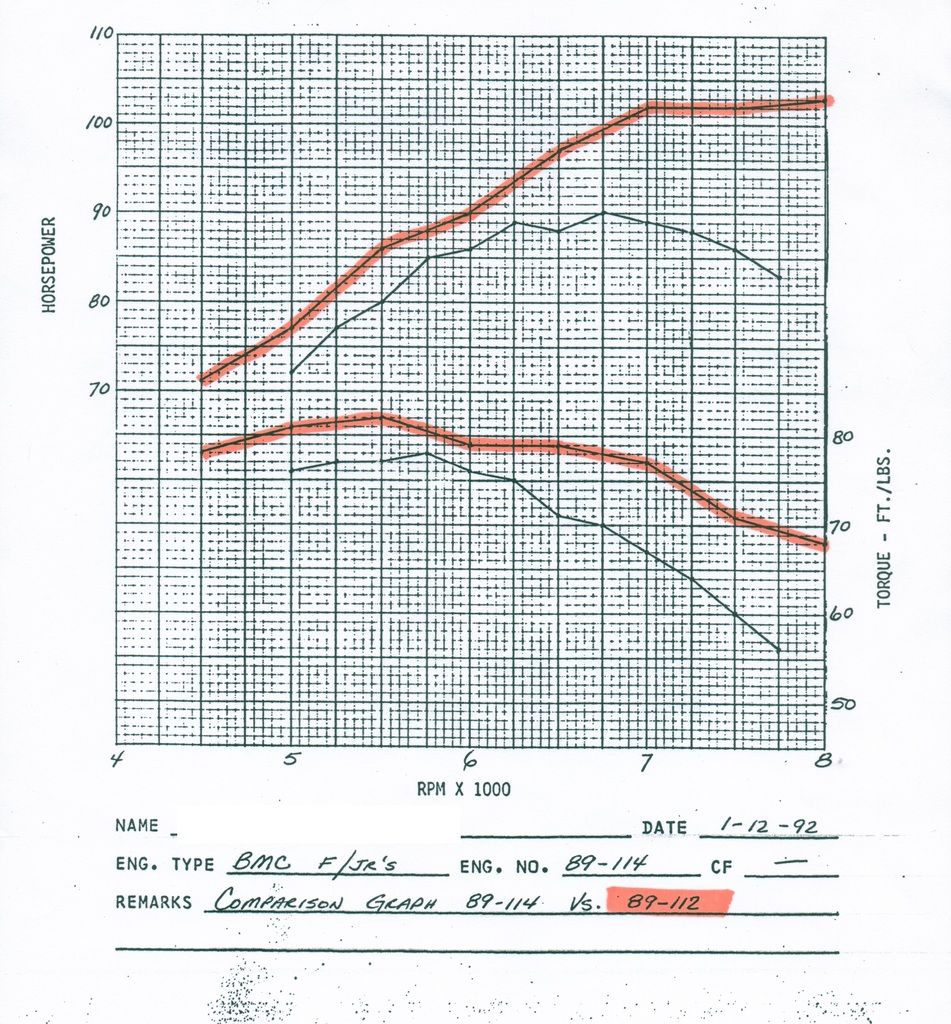I run a Honda '82 XL 500 four valve, dual exhaust thumper. It is stock other than a 2mm larger carb, velocity stack and straight pipes. The factory says it generates 32hp at 6500rpm. On the salt I can wind it up to 8,000rpm in 1,2,3 gear and then it drops to 7,600 in 4th and about 6,800 in 5th. My question is, "Should I shift at 6,500rpm or is there a benefit taking it to 8,000rpm?" I wonder if the power peak drops off after 6,500 and I'm fooling myself.
It's hard to give an intelligent answer without knowing the shape of the bhp curve, but in general, the fastest acceleration uses the largest amount of area under the bhp curve,
IF, the engine is reliable at the increased revs above peak bhp. Knowing the rpm drops through the gear ratios is also a requisite, because a gearbox with progressive "drops" will normally require differing shift points to utilize the power band properly, Vs a gearbox with straight drops.
These two samples REQUIRE different gear ratios:
 Notice the SIGNIFICANT difference in area under the bhp curve in these 2 samples.
Notice the SIGNIFICANT difference in area under the bhp curve in these 2 samples.
One was "thrown together", the other was "engineered". You pick how you want to do it . . . . . .
And, BTW, the "engineered" version was about 15 seconds per lap faster @ Road America.Sumner's site has some free gear ratio and rpm drop software, I think in spreadsheet format, that you might find useful.
Alternatively, you might want to invest in one of these pieces of software:
1/ Bonneville Pro or
2/ Performance Trends
A/ Transmission Gear Calculator reg or Pro
B/ Land Speed Record DRA Pro
Several guys on the site use these and can offer advice. I use Bonneville Pro and Transmission Gear Calculator Pro and I am satisfied with both. They do different things though, so be aware.
When you want the best results, it is always better to take the time to calculate things out. It avoids having to try out every possible permutation, with the attendant cost and time penalties.
AND, just for the record, calculations and software might
NOT find you the best combination,
BUT, they will keep you away from the dumb, time/money waster choices . . . . .
The process used is:
A/ Calculate
B/ Test and verify
Just ask Woody, Rob or the
midget . . . .

Fordboy